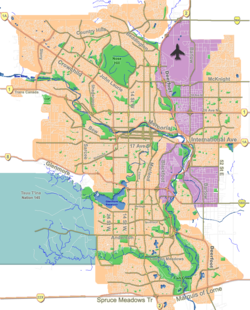 | |
 | |
Former name | TELUS World of Science (2005-2011) |
|---|---|
| Established | October 29, 2011 |
| Location | 220 St. George's Drive NE, Calgary, Alberta |
| Coordinates | 51°03′14″N114°01′29″W / 51.053899°N 114.024611°W |
| Type | Science museum |
| Visitors | 431,262 (2016) [1] |
| Website | https://www.sparkscience.ca |
TELUS Spark Science Centre is a science museum with interactive exhibits, multimedia presentations and educational demonstrations in Calgary, Alberta, Canada. There are more than 430,000 visitors annually, including over 82,000 students. [1]
Contents
The science museum was established in 1987 as the Calgary Science Centre. The science centre was later re-branded Telus World of Science – Calgary in 2005. In 2011, the science centre moved locations from the former Centennial Planetarium to the Nose Creek Valley. The science centre was re-branded to Telus Spark during the move.

